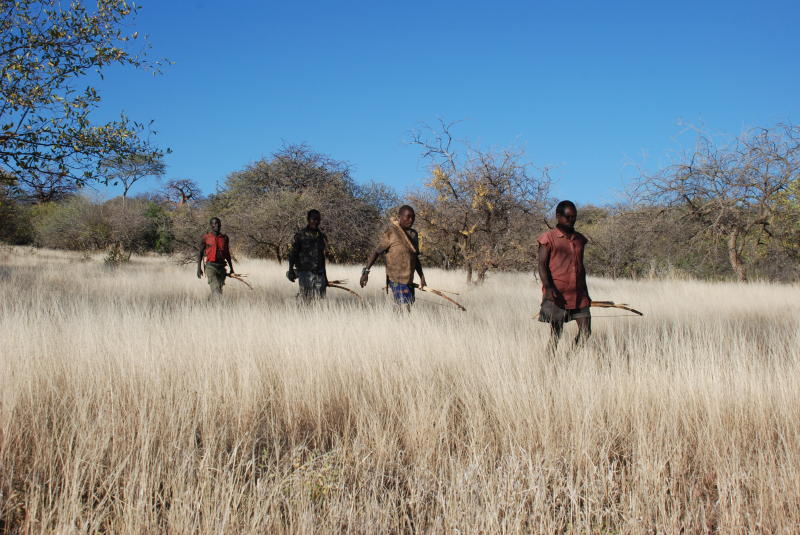Science News
Patterns of Movement
January 2, 2014
by Molly Michelson

Did you make a New Year’s resolution about exercising and moving more? Running, going to the gym, getting out there and walking?
I hate to be the bearer of bad news (on the second day of the new year, no less), but not only will you likely fail in your resolution, but your movements are fairly predictable.
It turns out that the way humans move (and honeybees and sharks, for that matter) follows a mathematical pattern called a Lévy walk.
The Lévy walk involves a series of short movements in one area and then a longer trek to another area, and is often associated with foraging behavior in animals. Researcher David Raichlen of the University of Arizona also wondered if this applied to human foraging and set out to study the movement patterns of one of the last hunter-gatherer tribes left—the Hadza people of Tanzania.
Raichen equipped members of the tribe with GPS wristwatches, tracking the Hadzas’ movements while on hunting or foraging bouts. Sure enough, the dominant theme of their foraging movements is a Lévy walk.
“Detecting this pattern among the Hadza, as has been found in several other species, tells us that such patterns are likely the result of general foraging strategies that many species adopt, across a wide variety of contexts,” says Raichen’s colleague, Brian Wood, an anthropologist at Yale University.
Adam Gordon of the University of Albany agrees. “It shows up all across the world in different species and links the way that we move around in the natural world. This suggests that it's a fundamental pattern likely present in our evolutionary history.”
Previous research demonstrates that the Lévy walk is not limited to searching for food. The pattern can help inform urban development. And humans sometimes follow this same pattern of movement while ambling around an amusement park.
“Think about your life,” Raichlen says. “What do you do on a normal day? Go to work and come back, walk short distances around your house? Then every once in a while you take these long steps, on foot, bike, in a car or on a plane. We tend to take short steps in one area and then take longer strides to get to another area.”
But Raichlen insists that following a Lévy walk pattern does not mean that humans don't consciously decide where they are going. “We definitely use memories and cues from the environment as we search, but this pattern seems to emerge in the process.”
Still, if some of those long stretches of the Lévy walk take you to the gym in the New Year, that could bode well for your resolution…
This study was published last week in the Proceedings of the National Academy of Sciences.
Image of Hadza people: Brian Wood, Yale